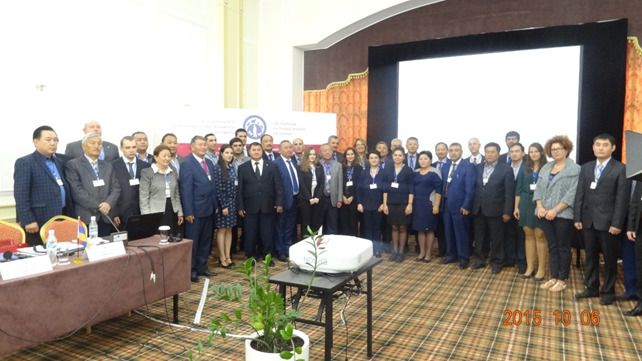Workshop objectives
The objective of the SDWE1 workshop was to launch a long-term regional initiative aiming to support countries to become progressively compliant with OIE intergovernmental standards on stray dog population control (Chapter 7.7 of the OIE Terrestrial Animal Health Code). The ultimate goal is to reduce the issues (in magnitude and severity) caused by stray dogs including rabies in humans, while ensuring proper animal welfare conditions for stray dogs.
More specifically, this workshop aimed to:
Workshop presanations:
Session 1 — Setting the scene session
OIE general presentation – E. Panina (OIE)
OIE achievements on Animal Welfare – L. Stuardo (OIE)
OIE Platform for Animal Welfare in Europe – N. Leboucq (OIE)
OIE Animal Welfare standard on stray dog population control (chapter 7.7) – R. Kolesar
OIE standard on infection with rabies virus (chapter 8.12) – L. Stuardo (OIE)
WHO presentation on rabies in Central Asia – WHO (by video)
OIE regional initiative on stray dog population control in the Balkans – N. Leboucq (OIE)
In-depth presentation of the stray dog Self-Assessment and Monitoring Tool – B. Alessandrini (IZSAM / Teramo)
Session 2 — Country reports
Session 3 — Identification of key challenges
Session 4—Adressing the Challenges
Topic 1 — Identifying the source of the problem (Stray Dogs)
General presentation of Topic 1 (based on Chapter 7.7) – Alexandra Hammond-Seaman (RSPCA)
Sharing of best practices (Country experience) – Georgia
Topic 2 — Surveying and monitoring Stray dog population
General presentation of Topic 2 – R. Kolesar (OIE)
Sharing of best practices (Country experience) – Azerbaijan
Topic 3 — Designing a modern legislation on Stray Dogs–
General presentation of Topic 3 – Martial Petitclerc (OIE)
Sharing of best practices (Country experience) – Poland
Topic 4 — Using Euthanasia as a last recourse
General presentation of Topic 4 (WAP guidelines) – Joe Anzuino (WAP)
Sharing of best practices (Country experience) – France
Topic 5 – Controlling rabies in dogs
General presentation of Topic 5 – A. Suharkov (ARRIAH)
Sharing of best practices (Country experience) – Kazakhstan
Session 5—Building a Vision towards sustainable stray dog control in West Eurasia
Summary – Steps to developing a comprehensive Stray Dog population control Strategy (in compliance with OIE standards) – Alexandra Hammond-Seaman (RSPCA)
Session 6 — Closing session
Closing remarks
